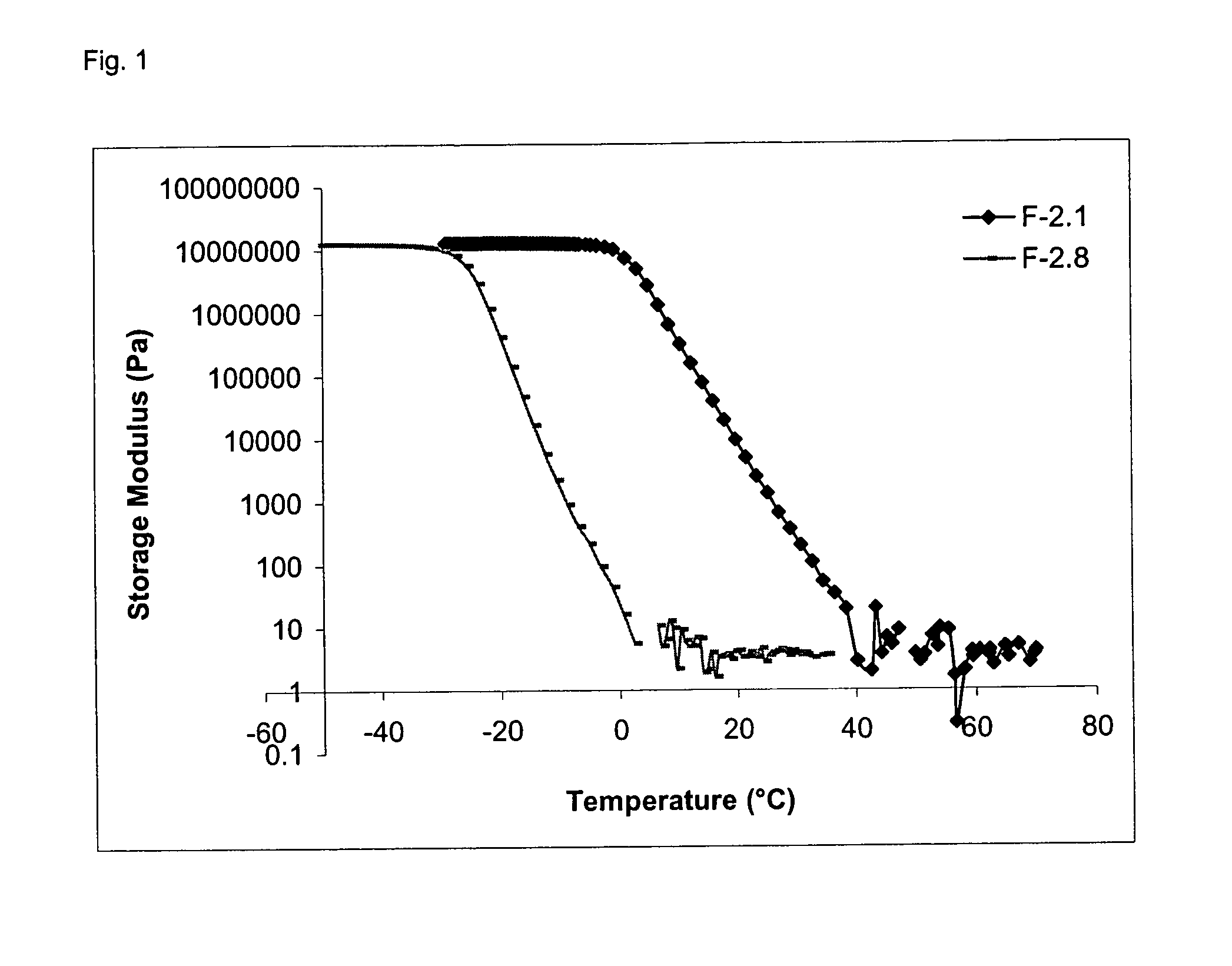Material forming supramolecular structures, process and uses
a material and structure technology, applied in the preparation of carbamic acid derivatives, adhesive types, organic chemistry, etc., can solve the problems of difficult and expensive production, difficult and expensive, and brittle supramolecular structure, etc., to achieve easy adjustment of composition, optimise properties, and facilitate the effect of varying composition
- Summary
- Abstract
- Description
- Claims
- Application Information
AI Technical Summary
Benefits of technology
Problems solved by technology
Method used
Image
Examples
example 1
Comparisons
example 1.1
Synthesis of 4,4′-Methylenebis(Phenyl-Carbamic Acid 2-Methyl Ester and Characterisation
[0054]Dry methanol (˜50 ml) was added into a flask containing MDI (2.50 g, 10 mmol) and the mixture stirred for 3 hours. The excess solvent was removed in vacuo to yield pure product as a white solid (3.01 g, 96%); m.p. 188° C.; 1H NMR (DMSO) δ 3.64 (s, 6H, 2×CH3), 3.79 (s, 2H, ArCH2Ar), 7.08-7.11 (AA′XX′, 4H, 4×ArH), 7.33-7.36 (AA′XX′, 4H, 4×ArH), 9.55 (s, 2H, 2×NH); 13C NMR (DMSO) δ 48.95 (CH3), 51.87 (CH2), 118.69 (ArC), 129.20 (ArC), 135.84 (ArC), 137.40 (ArC), 154.35 (CO2).
example 1.2
Synthesis of 4,4′-Methylenebis(Phenyl-Carbamic Acid Ethyl Ester) and Characterisation
[0055]To a solution of MDI (2.50 g, 10 mmol) in dry THF (10 ml) was added ethanol (30 ml). This was stirred at room temperature for 2 hours. The solvent was then removed in vacuo to yield a white solid. This was purified by chromatographic separation on silica with ethyl acetate as the eluent. The obtained product was a white solid (3.20 g, 94%); m.p. 134° C.; IR (THF, KBr) vmax / cm−1 2974 (C—H), 2860 (C—H), 1733 (C═O); 1H NMR (CDCl3) δ 1.26-1.32 (t, 6H, 2×CH3, J=7.0), 3.87 (s, 2H, ArCH2Ar, J=7.0), 6.66 (br s, 2H, NH), 7.06-7.11 (AA′XX′, 4H, ArH), 7.25-7.30 (AA′XX′, 4H, ArH); 13C NMR (CDCl3) δ 14.97 (CH3), 40.93 (OCH2), 61.58 (ArCH2Ar), 119.34 (ArC), 129.80 (ArC), 136.44 (ArC), 136.65 (ArC), 154.15 (C═O).
PUM
| Property | Measurement | Unit |
|---|---|---|
| transition temperature | aaaaa | aaaaa |
| transition temperature | aaaaa | aaaaa |
| storage modulus | aaaaa | aaaaa |
Abstract
Description
Claims
Application Information
 Login to View More
Login to View More - R&D
- Intellectual Property
- Life Sciences
- Materials
- Tech Scout
- Unparalleled Data Quality
- Higher Quality Content
- 60% Fewer Hallucinations
Browse by: Latest US Patents, China's latest patents, Technical Efficacy Thesaurus, Application Domain, Technology Topic, Popular Technical Reports.
© 2025 PatSnap. All rights reserved.Legal|Privacy policy|Modern Slavery Act Transparency Statement|Sitemap|About US| Contact US: help@patsnap.com



